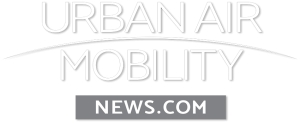
The Republic of Korea’s Ministry of Land, Infrastructure and Transport (MOLIT) has today unveiled its plans for the safe integration and commercialisation of urban air mobility (UAM). The plan is to secure the safety of air travel through 5G airspace networks, virtual platforms and demonstration projects, and to collaborate with local governments to explore practical applications.
A briefing session was held at 2:00 PM local time today at the Korea Aerospace Research Institute for UAM officials from 11 local governments.
“For the safe implementation of UAM, which will open new airways for transportation, logistics and tourism, a multi-layered foundation must be established in advance,” MOLIT said. “This includes not only visible aircraft, but also a safety navigation system that guides aircraft in the sky and confirms their position, a vertiport that supports takeoff and landing, and a testing and verification system that verifies all pre-flight procedures in a virtual environment.”
At the briefing, MOLIT shared details of three key projects it has been pursuing to establish a core foundation for safe UAM operation and discussed utilisation plans.
First, MOLIT explained how it is developing a 5G-based airspace network, which it described as an “essential communication, navigation, and surveillance system that helps aircraft locate their airspace, prevent collisions, and safely reach their destinations”. MOLIT plans to complete the first phase of the network’s development this year with further enhancement and expansion due in the future.
The second project is the establishment of a Virtual Integrated Platform to simulate real-world operational situations in a virtual environment, enabling accident prevention and preemptive verification of traffic management and safety inspection systems.
Finally, the K-UAM Grand Challenge will play a key role in accumulating operational experience and expertise in the future. It is a demonstration program where the public and private sectors jointly inspect and improve essential elements for commercialisation, such as aircraft, operations and traffic management.
Today’s briefing session underlined the importance of considering local airspace characteristics, weather conditions, infrastructure deployment, safety inspection systems and securing public acceptance when preparing for UAM projects. MOLIT also touched on future plans for utilisation through local government collaboration. In April, the ministry announced that regional pilot projects will be organised nationwide and urged local governments to review business demands that fit regional characteristics and analyse the location of vertiports.
Kim Hong-mok, Director of the Mobility and Automobile Bureau at the Ministry of Land, Infrastructure and Transport, stated, “While the aircraft is the most visible symbol of UAM, a robust, invisible AI operation system will determine the success or failure of the UAM era for safe operation.”
He noted that the briefing session serves as “a starting point for practical cooperation, combining the central government’s technological might with local governments’ regional expertise to create the safest and most efficient UAM service.”
For more information
Ministry of Land, Infrastructure and Transport – Republic of Korea
This article has been written with the assistance of translation software
Image: Shutterstock

